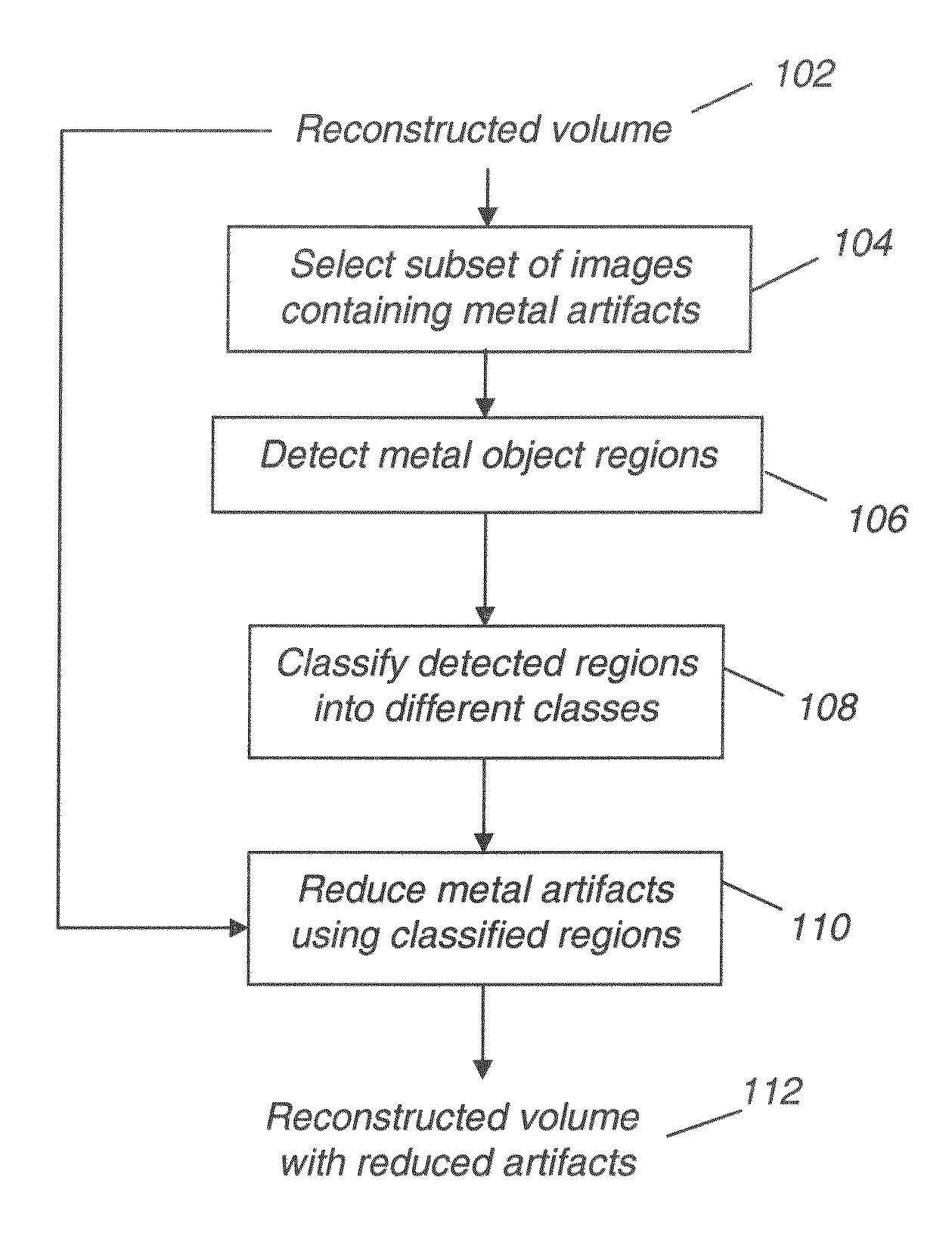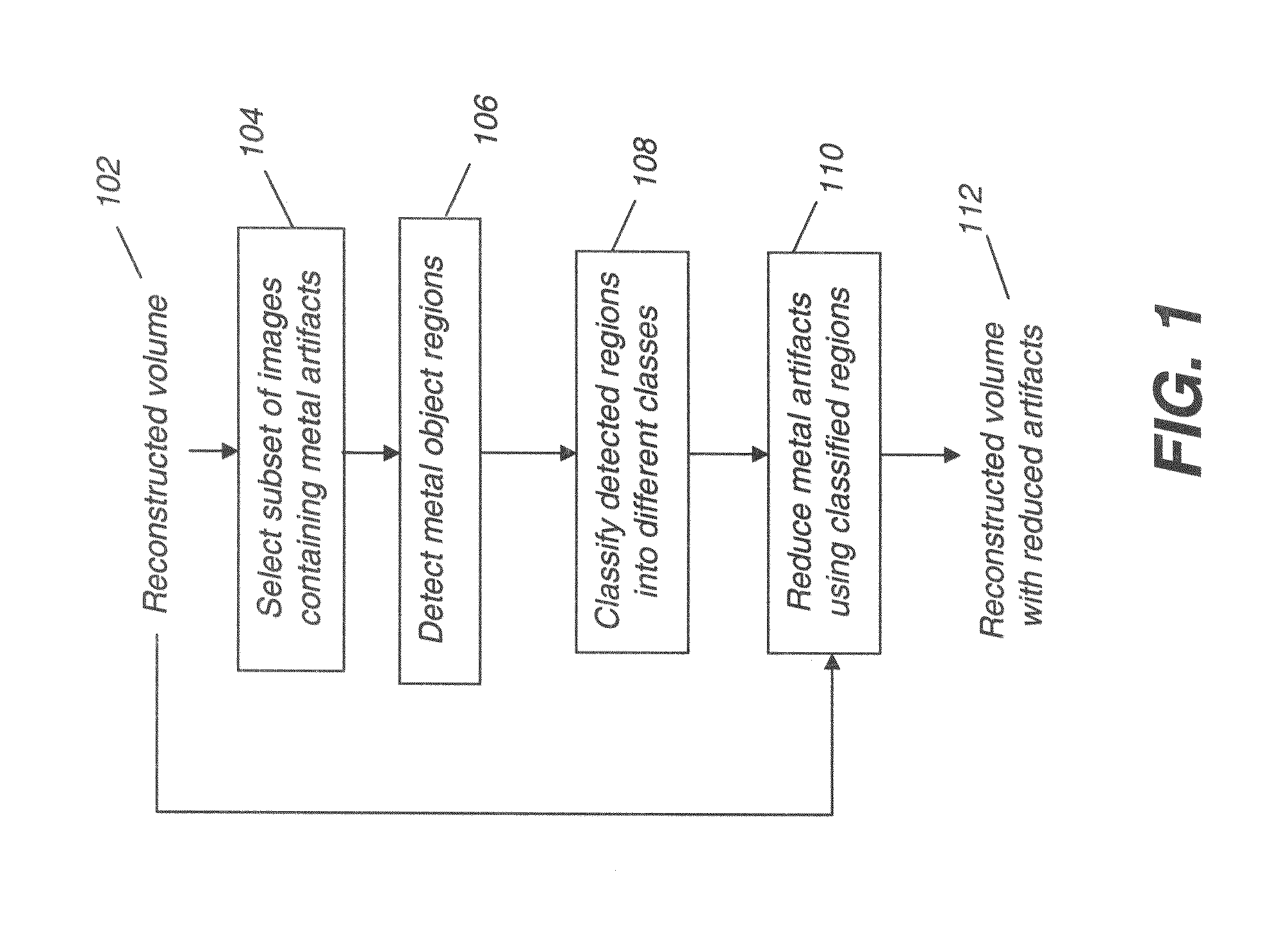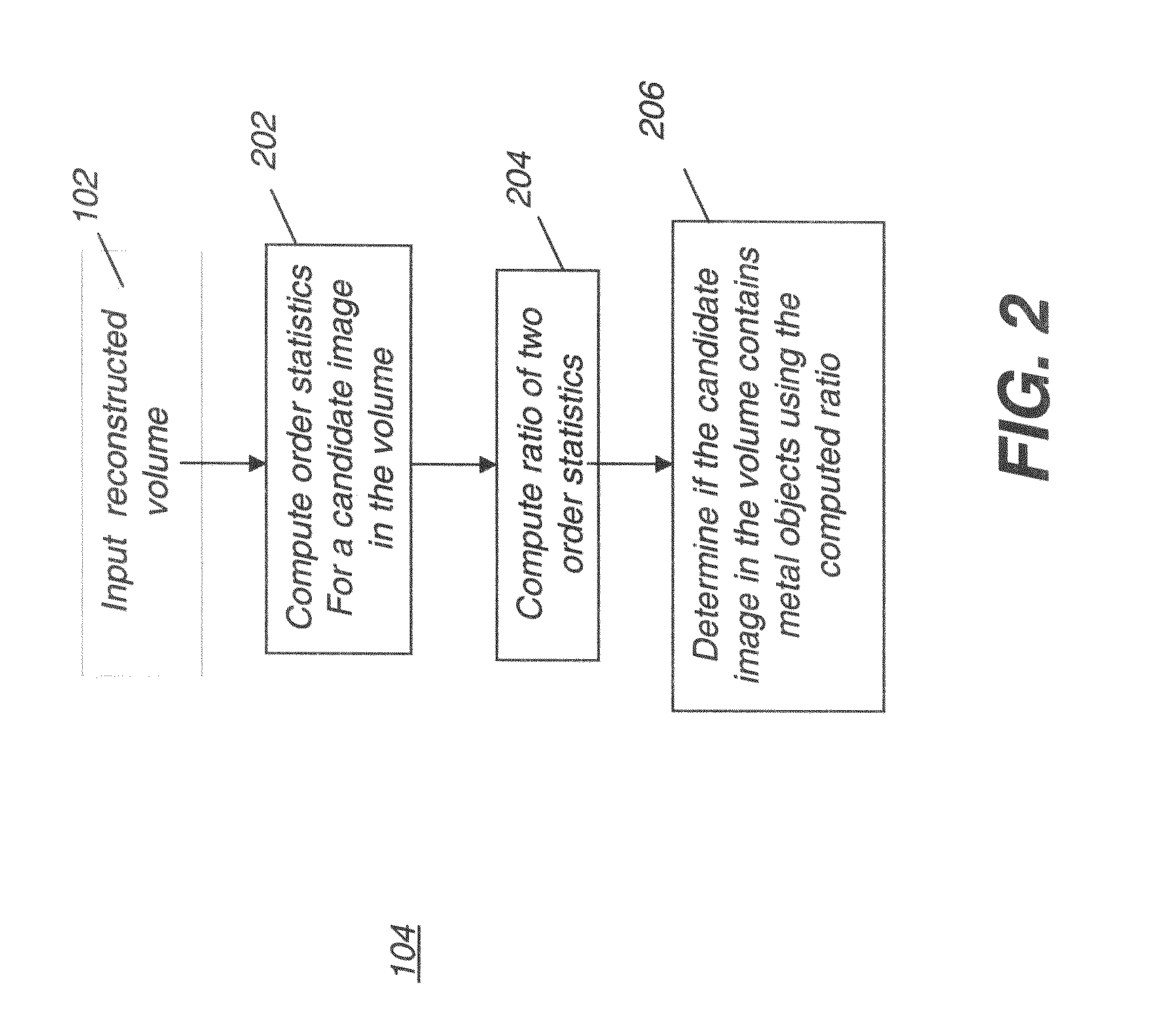Method and system for cone beam computed tomography high density object artifact reduction
a computed tomography and high density object technology, applied in tomography, image enhancement, instruments, etc., can solve the problems of physics-based artifacts, affecting the performance of computed tomography (ct) systems, metal features tend to generate high-frequency streaks or artifacts in the resulting image, etc., to achieve exhaustive and accurate processing and speed of computation
- Summary
- Abstract
- Description
- Claims
- Application Information
AI Technical Summary
Benefits of technology
Problems solved by technology
Method used
Image
Examples
Embodiment Construction
[0033]In the following detailed description of embodiments of the present invention, reference is made to the drawings in which the same reference numerals are assigned to identical elements in successive figures. It should be noted that these figures are provided to illustrate overall functions and relationships according to embodiments of the present invention and are not provided with intent to represent actual size or scale.
[0034]In the context of the present invention, the descriptive term “high density feature(s)” generally indicates a region, mass, or object of metal or other material, such as a tilling material that exceeds the density of the surrounding tissue and would be identified as a high density feature by a skilled practitioner. As just one example of a high density material, aluminum has a density value in excess of about 2.7 g / cm3. Because of differences related to dosage, however, it is impractical to posit any type of absolute threshold for defining high density;...
PUM
 Login to View More
Login to View More Abstract
Description
Claims
Application Information
 Login to View More
Login to View More - R&D
- Intellectual Property
- Life Sciences
- Materials
- Tech Scout
- Unparalleled Data Quality
- Higher Quality Content
- 60% Fewer Hallucinations
Browse by: Latest US Patents, China's latest patents, Technical Efficacy Thesaurus, Application Domain, Technology Topic, Popular Technical Reports.
© 2025 PatSnap. All rights reserved.Legal|Privacy policy|Modern Slavery Act Transparency Statement|Sitemap|About US| Contact US: help@patsnap.com



